Exploring the Ha Giang Loop in February offers a unique perspective on Vietnam’s northernmost province. The crisp winter air, blooming peach trees, and festive atmosphere create a magical backdrop for adventure seekers. February marks the transition from winter to spring, when the landscape begins its transformation while maintaining the clear visibility that makes this season special. For travelers wondering whether to brave the highland roads during this time, this guide answers your questions about weather conditions, safety considerations, and the unforgettable experiences that make February a compelling month to discover the stunning beauty of the Ha Giang Loop.
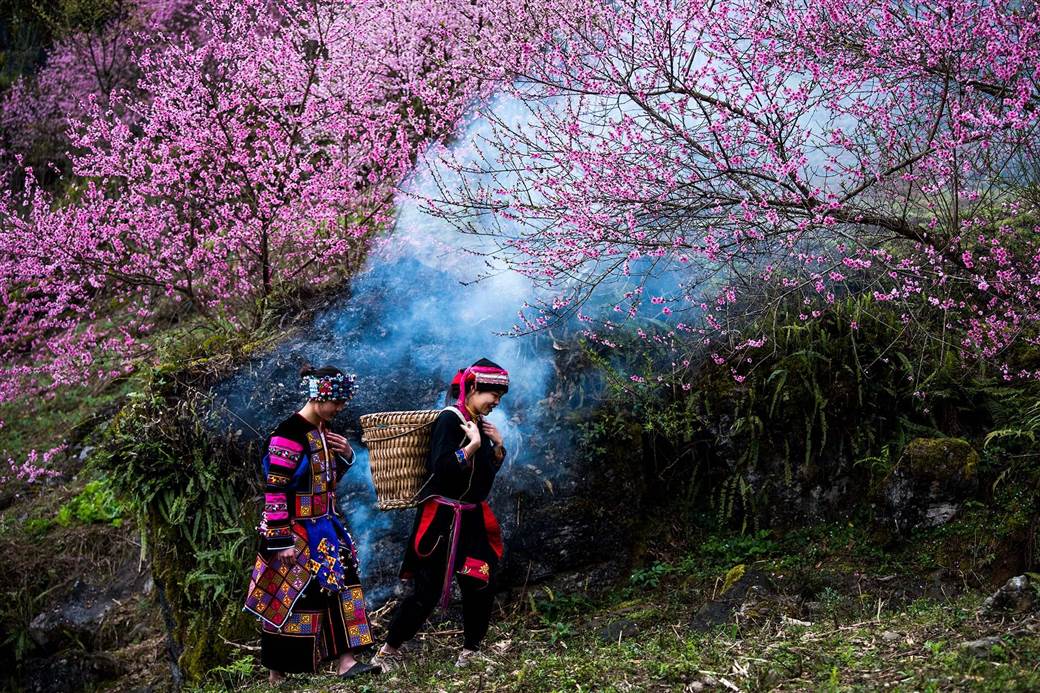
1. February Weather on the Ha Giang Loop
February in Ha Giang presents a fascinating blend of late winter and early spring conditions. The weather during this transitional month significantly impacts both your experience and practical planning. Understanding the climate patterns helps ensure you’re properly prepared for what awaits on the winding mountain roads.
1.1 Temperature, Rainfall, and Sunlight
February temperatures in Ha Giang typically range between 10-20°C (50-68°F) during daylight hours, creating comfortable conditions for exploration. Mornings and evenings remain quite cool, often dropping to 5-8°C (41-46°F), so layering becomes essential. The colder temperatures usually occur at higher elevations, such as Dong Van Plateau and Ma Pi Leng Pass, where wind chill can make it feel several degrees colder.
Rainfall in February is relatively minimal, with precipitation averaging just 25-40mm across the month. This represents one of the drier periods in Ha Giang’s annual climate cycle, with most days staying clear and dry. When rain does occur, it typically manifests as light drizzles rather than heavy downpours, rarely lasting more than a few hours.
Sunlight hours increase noticeably throughout February, with approximately 5-6 hours of sunshine daily. Early February maintains winter’s shorter days, but by month’s end, you’ll experience noticeably longer daylight periods. For photographers, the golden hour light during this season creates spectacular conditions, especially when illuminating the karst formations against clear blue skies.
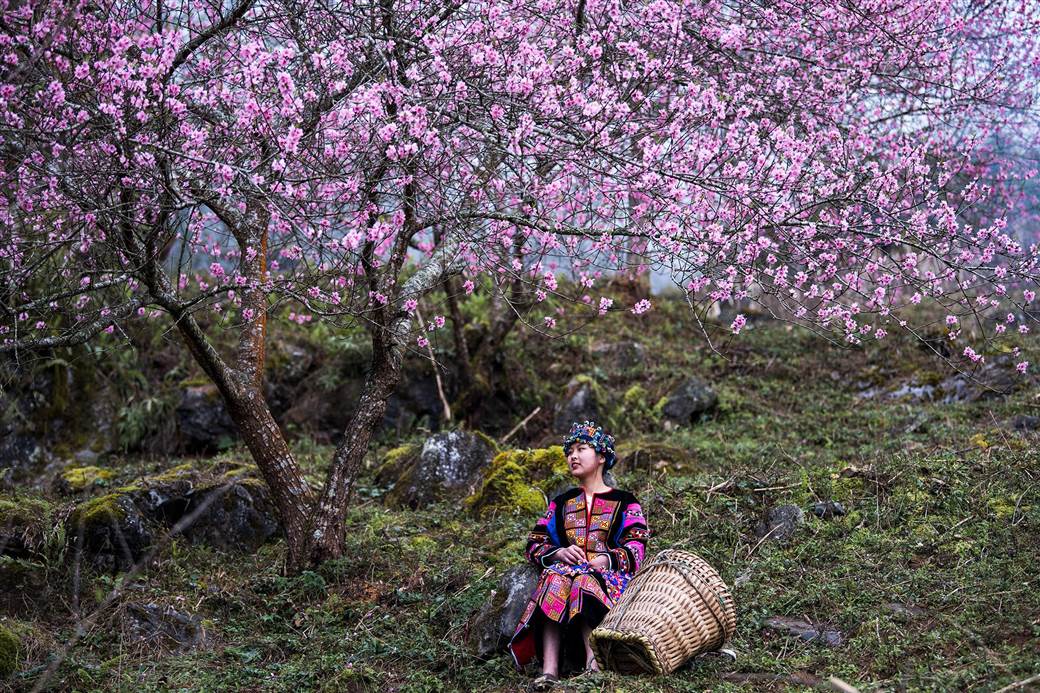
1.2 Fog and Visibility: What to Expect
Fog represents one of February’s most characteristic weather phenomena in Ha Giang, creating both challenges and photographic opportunities. Morning fog typically blankets valleys and mountain passes until 9-10 AM, particularly in areas around Quan Ba Heaven Gate and Lung Cu Flag Tower. This ethereal mist offers dreamlike photography conditions but requires patience from travelers waiting for visibility to improve.
Visibility patterns follow a relatively predictable daily cycle during February. Early mornings often start with dense fog that gradually burns off as temperatures rise. By mid-morning, most high points emerge from the mist, though some valleys may remain shrouded longer. Afternoons generally provide excellent visibility across the landscape, with clear sightlines extending for kilometers across the karst plateau.
Temperature inversions frequently occur in February, creating the striking phenomenon where mountain peaks rise above a sea of clouds. Prime viewing locations for this spectacle include Heaven’s Gate in Quan Ba and various high points along the Ma Pi Leng Pass. These inversions typically happen overnight and early morning, rewarding early risers with unforgettable vistas that few tourists witness.
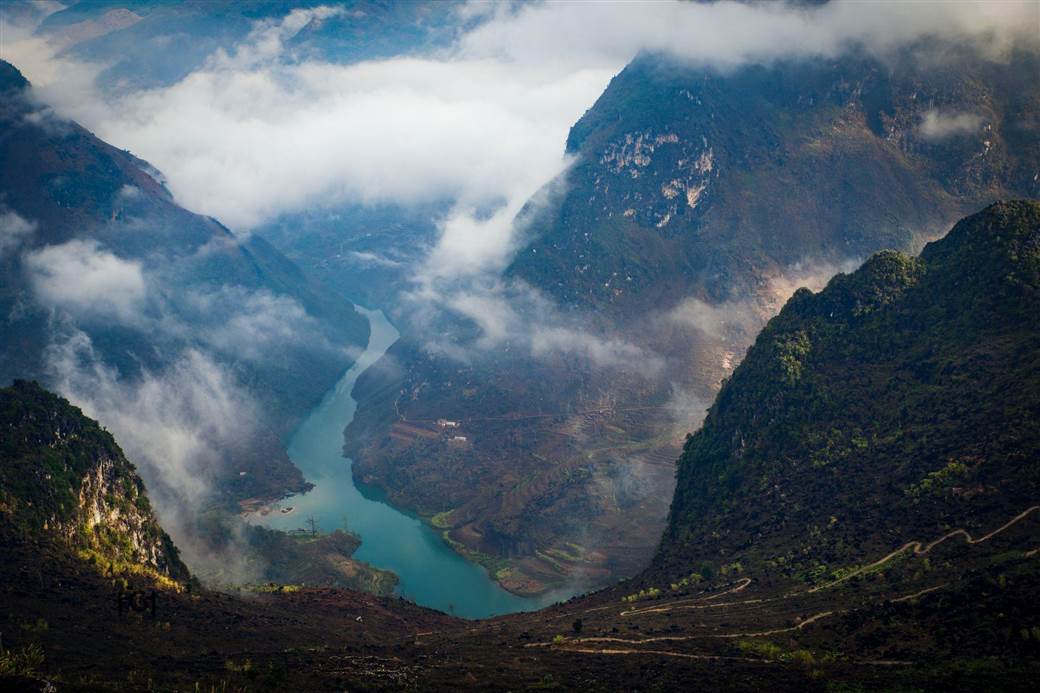
1.3 Packing and Preparation Tips
Proper clothing for February in Ha Giang requires thoughtful layering to accommodate temperature fluctuations. Start with moisture-wicking base layers, add insulating mid-layers like fleece or lightweight down, and finish with a windproof and water-resistant outer shell. Gloves, scarves, and warm hats are essential, especially for early morning rides when temperatures hover just above freezing.
Specialized riding gear becomes crucial if you’re motorbiking the loop. Quality riding gloves provide both warmth and grip safety on winding roads. Consider bringing a thin balaclava to wear under your helmet during morning rides. Waterproof overpants and boot covers offer valuable protection from occasional drizzle and persistent road spray from puddles that remain in shaded areas.
Additional weather-related items worth packing include polarized sunglasses to cut glare on bright days, chemical hand warmers for particularly cold mornings, and a thermos for carrying hot drinks. Phieu Travel recommends packing quick-dry microfiber towels and a portable clothesline, as humidity can make drying clothes challenging if they get wet. These small additions make a significant difference in maintaining comfort throughout your February journey.
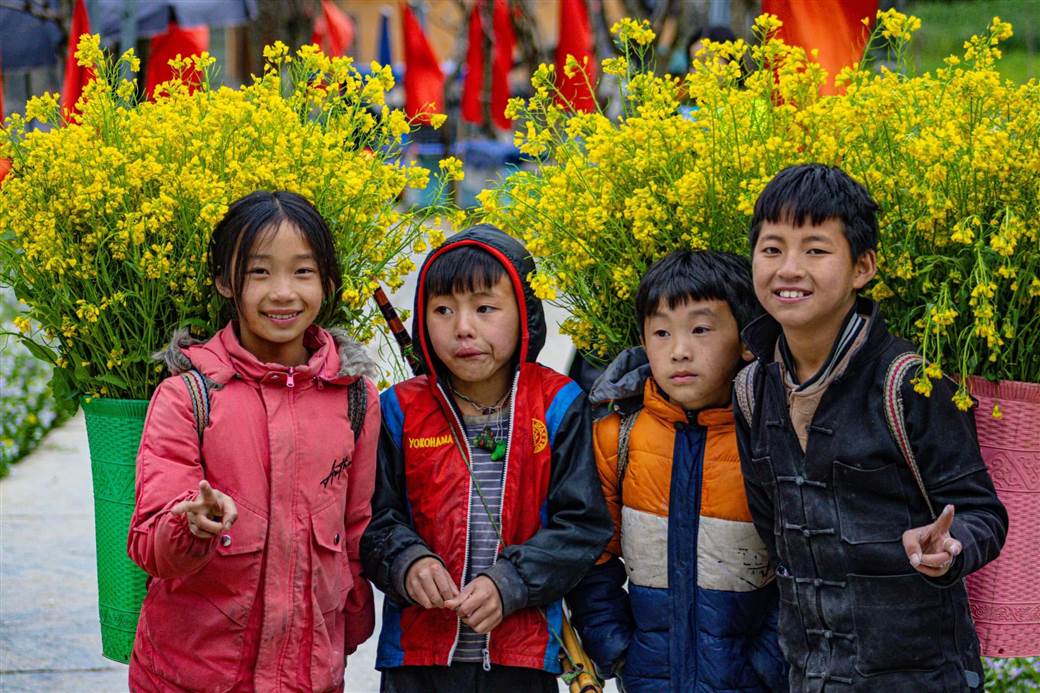
The Best Time to Visit Ha Giang: A Seasonal Guide to Flowers & Festivals
2. Road and Safety Conditions in February
Road conditions in February present both advantages and challenges that directly impact safety and navigation. Understanding these factors helps travelers make informed decisions about transportation methods and itinerary planning while ensuring a safer experience on the winding mountain roads.
2.1 How Rain and Fog Affect the Loop
February’s limited rainfall means roads generally remain dry and stable for most of the month. When precipitation does occur, it typically causes only short-term slickness rather than major flooding or landslides common during summer monsoons. However, northern portions of the loop, particularly around Lung Cu and Dong Van, occasionally experience light freezing drizzle in early morning hours, creating isolated slippery patches.
Fog significantly impacts driving conditions, especially during early mornings on mountain passes. Visibility can suddenly drop to less than 20 meters in dense fog pockets, requiring reduced speeds and heightened attention. The most fog-prone sections include Tham Ma Pass, Heaven’s Gate, and portions of Ma Pi Leng Pass. Phieu Travel recommends planning your daily departures after 9 AM when possible to allow the heaviest fog to dissipate.
Road maintenance status generally remains favorable in February as minimal precipitation means fewer emergency repairs. However, sections near Meo Vac and Du Gia may show lingering damage from the previous rainy season. Recent years have seen significant improvement in major road surfaces, though riders should remain vigilant for scattered gravel patches, especially after hairpin turns where erosion control work occurs regularly.
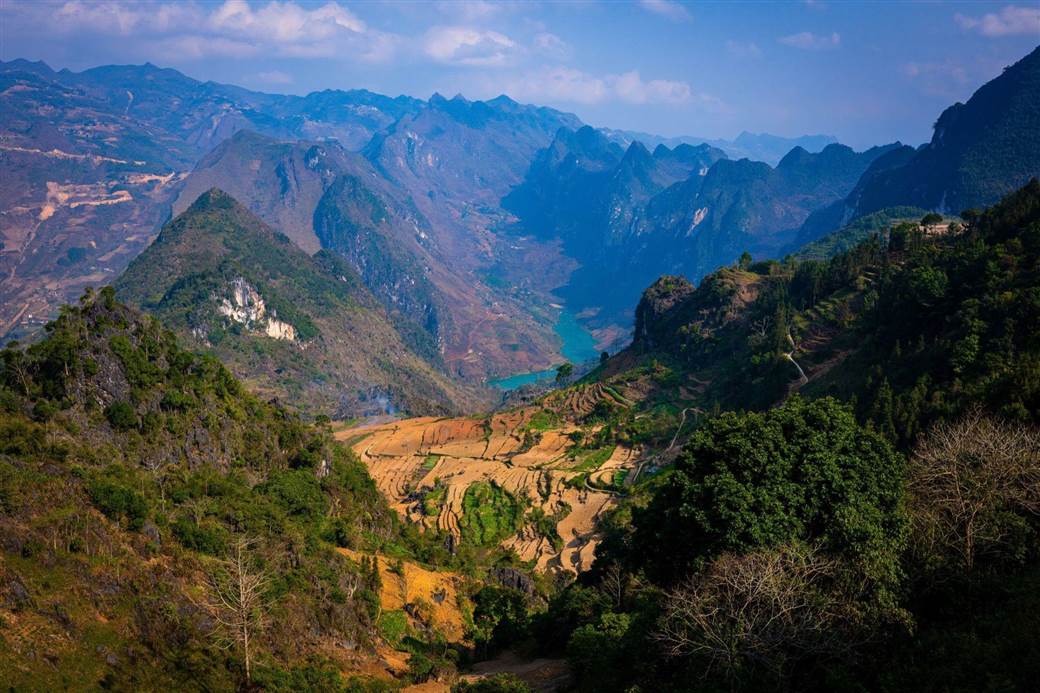
2.2 Motorbike, Car & Jeep: Pros and Cons
Motorbikes remain the most popular and flexible transportation option for the Ha Giang Loop in February. They offer unparalleled access to narrow viewpoints and village roads while providing the sensation of being immersed in the landscape. February’s predominantly dry roads reduce common wet-season hazards, though morning cold requires proper gear and careful riding until temperatures rise. Semi-automatic bikes prove easier for novice riders handling mountain switchbacks compared to fully manual transmissions.
Cars provide weather protection and comfort that becomes particularly valuable during February’s cold mornings and occasional drizzle. They accommodate more luggage and eliminate exposure to wind chill that motorbike riders experience at higher elevations. However, cars face significant limitations navigating the narrowest sections of the loop, particularly around Ma Pi Leng Pass, and cannot access many smaller village roads that hold cultural interest.
Jeep tours offer an excellent middle-ground option that combines protection from elements with better off-road capability. Open-top jeeps permit photography opportunities similar to motorcycles while providing more stability on uneven surfaces. February’s clear weather makes this option particularly appealing, though early morning departures still require warm clothing. Phieu Travel arranges custom jeep tours with experienced local drivers who understand February road conditions intimately.
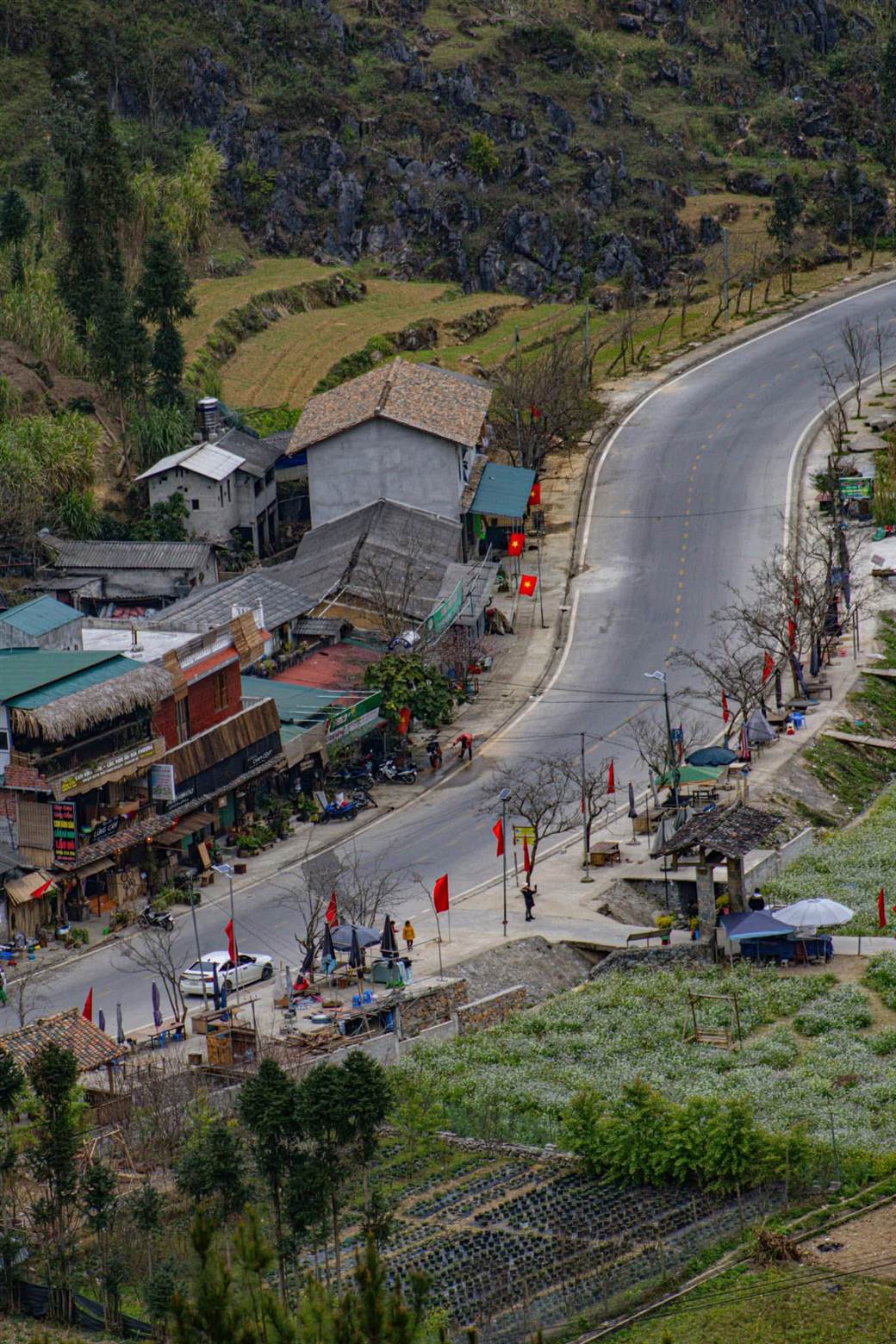
Ha Giang Motorbike Loop: The Ultimate Tour with Phieu Travel
3. Best Things to Do: Activities & Experiences
February in Ha Giang offers distinctive experiences that combine winter’s clarity with early spring’s renewal. The unique seasonal attributes create opportunities for activities that aren’t available or are less impressive during other months, making this a special time to visit the region.
3.1 Trekking, Sightseeing, and Photography
February presents ideal conditions for trekking, with comfortable daytime temperatures and minimal rainfall creating perfect hiking weather. Popular routes include the trail from Lung Cu to Lo Lo Chai village and the paths around Heaven’s Gate in Quan Ba. The drier terrain makes footpaths more navigable than during rainy months, while cool temperatures prevent the overheating common during summer treks. February hikers enjoy the rare combination of clear visibility and comfortable exertion conditions.
Photography benefits tremendously from February’s atmospheric conditions. Morning fog creates dramatic layered landscapes when photographed from elevated positions like Ma Pi Leng Pass or Lung Cu Flag Tower. By mid-morning, the lifting fog reveals extraordinary clarity with distant limestone formations crisply visible. The low winter sun angle throughout February creates distinctive shadows across the karst landscape, producing depth and dimension in photographs that summer’s overhead light cannot match.
Sightseeing at cultural landmarks benefits from February’s lower tourist numbers. The Hmong King’s Palace in Sa Phin and Lung Cu Flag Tower offer more contemplative visiting experiences without summer crowds. February’s clear skies provide spectacular vistas from Ma Pi Leng Pass, where visibility often extends uninterrupted across the entire canyon. The contrast between the emerald Nho Que River and surrounding terrain appears particularly vivid during this season.
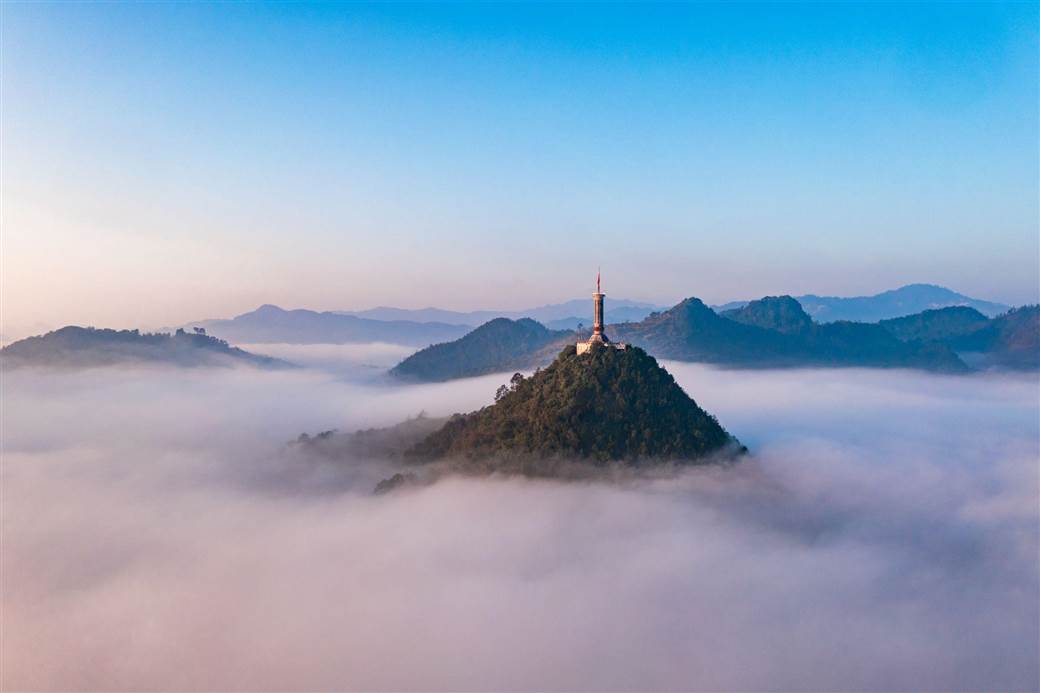
Ha Giang Trekking Tours: Ultimate Guide for Adventurers 2025
3.2 Spring Flowers & Blossom Hotspots
February marks the beginning of plum and peach blossom season across Ha Giang’s higher elevations. White plum blossoms typically emerge first in early February, creating stunning contrasts against the winter-brown hillsides. Key viewing locations include the hillsides around Lung Tam village and scattered homesteads throughout Dong Van district. These early blossoms often appear while morning frost still touches the ground, creating a uniquely beautiful juxtaposition.
Peach blossoms follow slightly later, usually reaching peak bloom in mid to late February. These delicate pink flowers cluster most densely around traditional homesteads and village entrances. The regions around Yen Minh and portions of Quan Ba district offer particularly good viewing opportunities. Local families often plant peach trees as boundary markers, meaning rural roads become natural blossom-viewing routes during this season.
Rapeseed flowers (cải vàng) begin their yellow carpet display in February, particularly in the valleys between Dong Van and Meo Vac. These bright golden fields create spectacular photography opportunities, especially when viewed from elevated positions along the Ma Pi Leng Pass. Unlike the more famous autumn buckwheat flowers, February’s rapeseed blossoms remain a relatively undiscovered spectacle that provides equally impressive landscape transformations without the accompanying crowds.
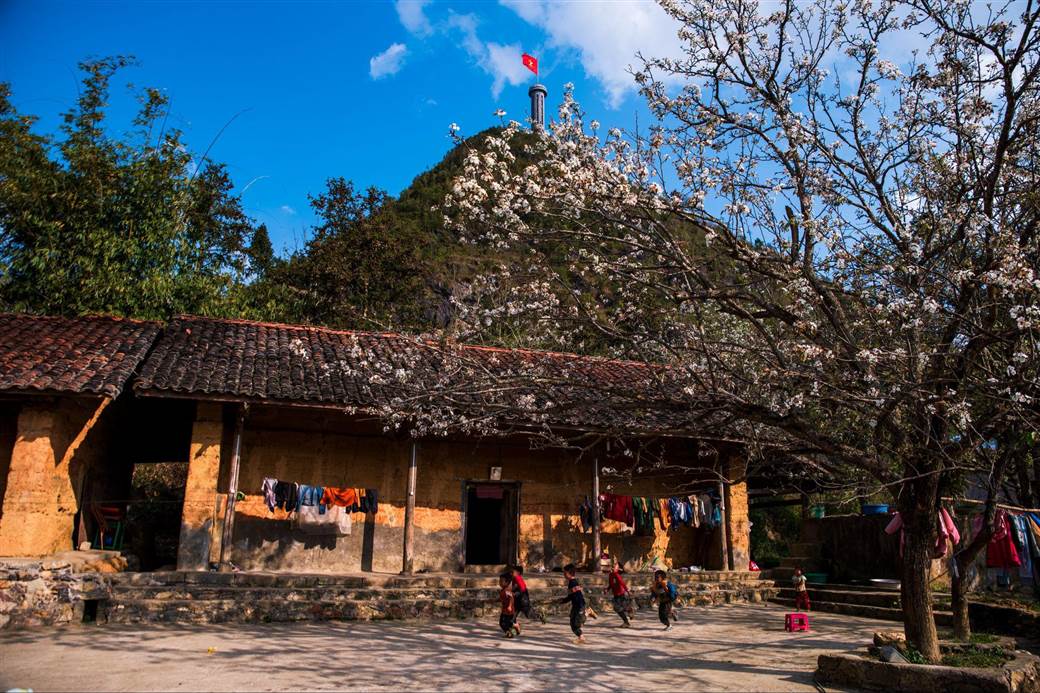
The Ultimate Guide to Ha Giang in March: Flowers, Weather & Tips
3.3 Local Events and Festivals (Tet, Ethnic Celebrations)
Lunar New Year (Tet) celebrations often extend into early February, offering travelers a chance to experience Vietnam’s most important cultural festival in its most authentic form. Ha Giang’s ethnic minority communities maintain unique Tet traditions distinct from lowland celebrations. Villages come alive with traditional games, music performances, and community feasts. Homestays during this period provide genuine immersion in family celebrations, though advance booking becomes essential.
The Gau Tao Festival, significant for the Hmong people, sometimes falls in February (depending on the lunar calendar). This festival praying for prosperity features vibrant costumes, traditional music, and ritualistic performances. Celebrating primarily in Dong Van and Meo Vac districts, local Hmong communities welcome respectful visitors to observe and sometimes participate in the festivities. Phieu Travel can arrange specialized cultural guides who explain the significance of rituals and proper etiquette for visitors.
Market days take on special significance during February as communities gather after winter’s relative isolation. The Sunday markets in Dong Van and Meo Vac become particularly vibrant, with ethnic minority groups in full traditional dress trading special items for the new year season. February markets feature unique seasonal products like early spring vegetables, ceremonial items, and new clothing for the coming year, creating both commercial and social hubs that visitors can respectfully observe.
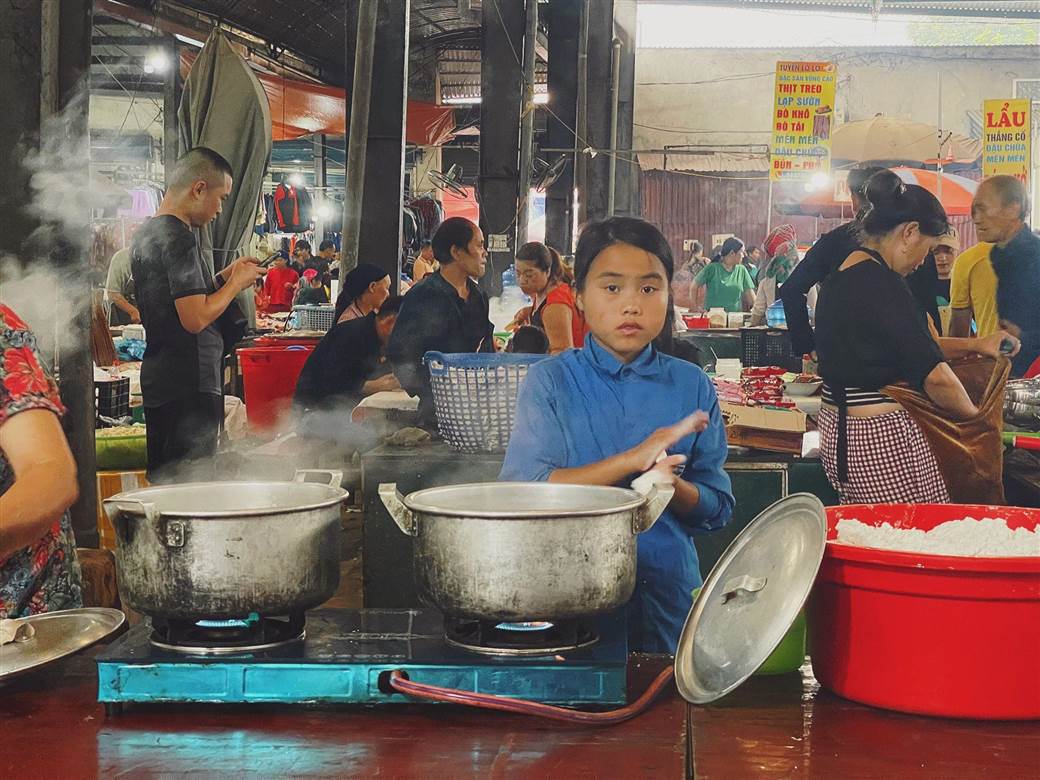
4. Sample Itineraries and Top Stops in February
February’s stable weather and special seasonal attractions allow for well-planned itineraries that maximize the unique offerings of this month. Whether you have three days or five, these suggested routes help you experience the best of Ha Giang during this transitional season.
4.1 3-Day and 5-Day Loop Tours
A three-day itinerary focuses on essential highlights while maintaining a manageable pace considering February’s shorter daylight hours. Day one covers Ha Giang City to Yen Minh, including Heaven’s Gate and the Twin Mountains in Quan Ba. The second day continues from Yen Minh to Dong Van, visiting the Hmong King’s Palace and Lung Cu Flag Tower. The final day completes the loop from Dong Van through Ma Pi Leng Pass and Meo Vac before returning to Ha Giang City. This condensed itinerary prioritizes main attractions while allowing enough flexibility for weather variations typical in February.
Five-day itineraries permit a more immersive experience with additional cultural encounters and photography opportunities. Days one and two follow the three-day route but with added stops at smaller villages and viewpoints. Day three becomes dedicated to exploring Dong Van Plateau thoroughly, including longer visits to ethnic villages like Lung Tam and Lo Lo Chai. The fourth day focuses on Ma Pi Leng Pass and the Nho Que River with time for a boat trip through the canyon. The final day takes a less-traveled route back through Du Gia with opportunities to visit its waterfall and hot springs especially welcome during February’s cooler temperatures.
February-specific scheduling considerations include starting daily rides after 9 AM when possible to avoid the coldest temperatures and allow morning fog to dissipate. Plan to reach each day’s destination before sunset (approximately 6 PM in February) to avoid navigating mountain roads in darkness. Phieu Travel recommends building extra flexibility into itineraries during this month, allowing for occasional weather delays while ensuring comfortable travel pacing.
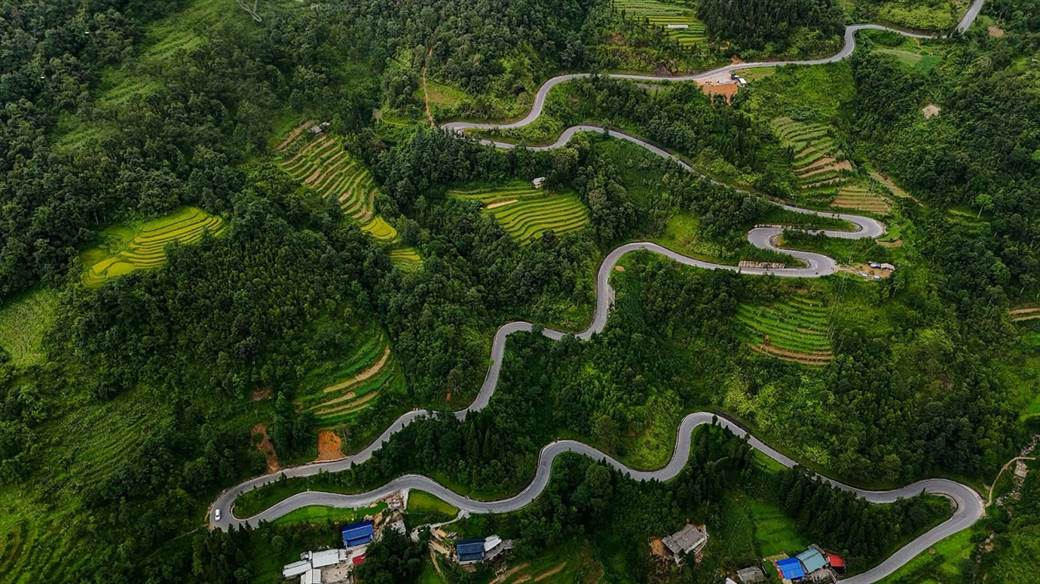
3 Days 2 Nights Ha Giang Loop tour package from Phieu Travel
4.2 Must-See Villages and Viewpoints
Villages particularly worth visiting in February include Lung Tam, where the Hmong linen cooperative showcases traditional handicrafts in a photogenic setting often adorned with early plum blossoms. Lo Lo Chai village near Lung Cu offers authentic cultural experiences and stunning mountain backdrops that appear particularly dramatic under February’s clear skies. The Pao’s House in Lung Cung valley provides insights into traditional architecture while surrounded by terraced fields that begin showing the first hints of spring green.
February’s atmospheric conditions enhance specific viewpoints along the loop. The Ma Pi Leng Pass Skywalk offers extraordinary visibility across the canyon, with the winter air clarity revealing distant details often obscured during hazier months. Quan Ba Heaven’s Gate frequently sits above the morning cloud line in February, creating the famous “sea of clouds” effect most reliably during this season. The viewing platform at Lung Cu Flag Tower provides expansive border vistas that extend significantly further during February’s exceptional atmospheric transparency.
Unique February photo opportunities include morning frost patterns on terraced fields around Yen Minh, particularly striking when photographed within an hour of sunrise. The contrast between white plum blossoms and weathered stone houses in older settlements creates compelling compositions exclusive to this season. The Nho Que River appears at its most vivid emerald during February when reduced sediment and strong winter light combine to intensify its color against the surrounding landscape.
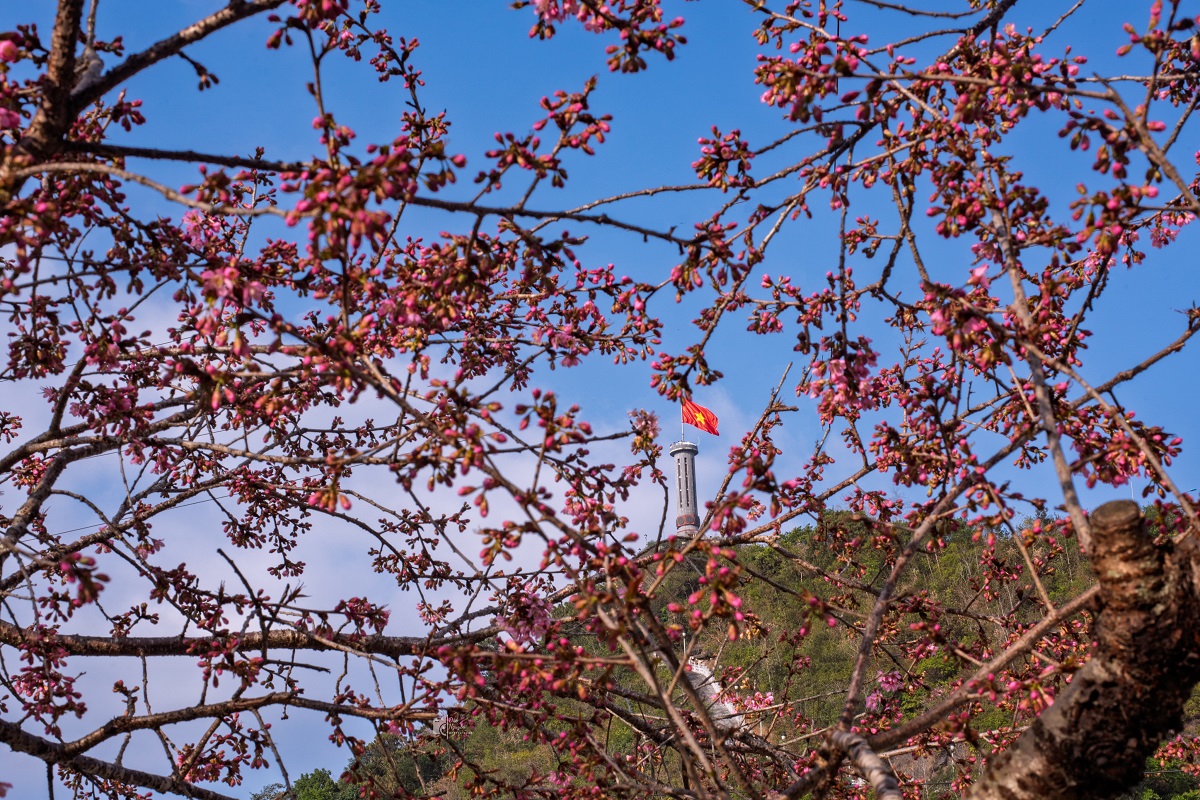
Top 7 Benefits of the Herbal Bath of Dao People You Must Try in Northern Vietnam
5. Crowd Levels, Costs & Booking Tips
February presents a distinctive travel environment regarding visitor numbers, pricing, and availability. Understanding these patterns helps travelers make informed decisions and potentially benefit from the unique advantages this month offers.
5.1 Accommodation Availability in February
Accommodation availability varies significantly depending on when in February you visit. Early February, particularly if it coincides with Lunar New Year celebrations, sees higher domestic tourism and reduced availability, especially in popular homestays. Mid to late February generally offers excellent availability across all accommodation types, from basic homestays to higher-end options in Ha Giang City. This period represents a sweet spot between holiday crowds and the spring tourism surge.
Homestay experiences become particularly rewarding during February as families spend more time indoors around traditional heating stoves. This creates natural opportunities for cultural exchange and authentic interaction. Many homestays offer seasonal specialties during this period, including homemade rice wine and preserved foods prepared for winter. Phieu Travel partners with homestays that maintain proper heating systems, ensuring comfortable overnight experiences despite February’s cool temperatures.
Hotel options in town centers operate with normal service levels throughout February, though some budget accommodations in remote areas might limit operations during extreme cold snaps. Guest houses in Dong Van and Meo Vac typically maintain normal hours but may reduce staff during quieter periods. Higher-quality accommodations in Ha Giang City rarely face capacity issues during February except during specific festival dates, making last-minute bookings more feasible than during peak seasons.
5.2 How Far in Advance to Book
Transportation bookings follow different patterns than accommodation in February. Motorbike rentals rarely require advance reservation during mid to late February, with ample availability in Ha Giang City. However, quality bikes with proper maintenance crucial for safety during cooler temperatures warrant booking 3-5 days ahead through reputable providers like Phieu Travel. Jeep tours maintain good availability throughout February except during major holidays but benefit from 1-2 weeks advance booking to secure preferred vehicles and drivers.
Guided tours experience fluctuating demand in February, with availability highest during mid-month periods. Solo travelers seeking to join group tours might encounter fewer options than during high season but can typically find available slots with 3-7 days notice. Private guides, especially those knowledgeable about seasonal photography spots and ethnic festivals, remain in higher demand and benefit from booking 2-3 weeks ahead.
Specialty experiences unique to February including village festival visits, traditional paper-making workshops, and guided photography tours focused on morning mist require the earliest reservations. These limited-availability activities often book out 3-4 weeks in advance, particularly around known festival dates. Phieu Travel can arrange these specialized experiences but recommends securing spots immediately after confirming your travel dates to avoid disappointment.
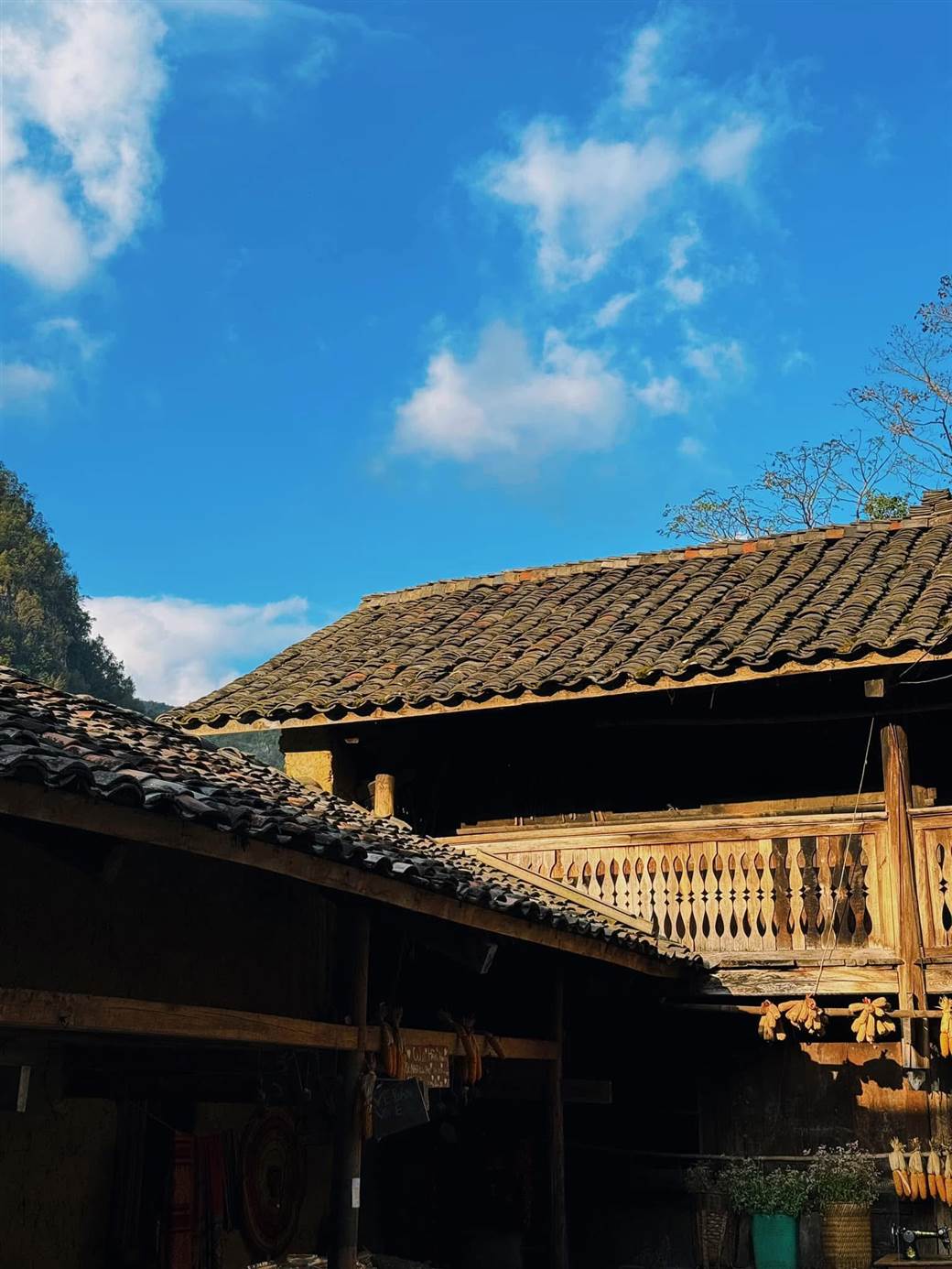
Ha Giang Loop cost guide 2025: real prices, tour options & savings
6. FAQ: February Travel on the Ha Giang Loop
For many first-time travelers, February raises common questions about weather, road safety, and cultural experiences on the Ha Giang Loop. Below are the most frequently asked questions with clear answers to help you prepare for your trip.
Is February a good time to do the Ha Giang Loop?
February offers excellent conditions for exploring the Ha Giang Loop, with predominantly dry weather, clear visibility, and fewer tourists than peak seasons. While mornings remain cold, daytime temperatures typically reach comfortable levels for motorbiking and outdoor activities. The month combines winter’s crisp visibility with early signs of spring, creating unique photography opportunities and cultural experiences as ethnic minorities celebrate lunar new year events.
Does it rain a lot in Ha Giang in February?
February in Ha Giang experiences minimal rainfall, averaging just 25-40mm across the entire month. When precipitation does occur, it typically manifests as light drizzle rather than heavy downpours, rarely lasting more than a few hours. Morning fog and occasional light mist are more common than actual rainfall, making February one of the drier months to explore the region.
Are the roads safe for riding the Ha Giang Loop in February?
Road conditions in February are generally good, with dry surfaces on most days and minimal risk of landslides or flooding common during summer months. The primary safety considerations include morning fog that can reduce visibility until 9-10 AM and occasional frost on shaded road sections at higher elevations. By mid-morning, conditions typically improve significantly, making February safer than rainy season months for motorbiking.
What should I pack for the Ha Giang Loop in February?
Essential items include layered clothing (thermal base layers, mid-weight insulation, and windproof/waterproof outer shells), warm gloves, face protection for motorbiking, and a good quality helmet with clear visor. Additional recommended items include polarized sunglasses, a thermos for hot drinks, waterproof phone case, power bank, and a quick-dry microfiber towel. Phieu Travel suggests packing hand warmers and thin balaclava for early morning rides.
What festivals or events happen in Ha Giang during February?
February often features extended Lunar New Year (Tet) celebrations, especially in early February depending on the lunar calendar. The Hmong Gau Tao Festival sometimes occurs during this month, featuring traditional games, music, and community gatherings. Regular Sunday markets in Dong Van and Meo Vac become particularly vibrant during February as communities emerge from winter isolation with special goods and festive clothing.
Are hotels and homestays busy on the Loop in February?
Accommodation demand varies throughout February. Early February, particularly during Tet celebrations, sees higher domestic tourism and reduced availability. Mid to late February offers excellent availability across all accommodation types, from homestays to hotels. Phieu Travel recommends booking homestays 5-7 days in advance during regular February periods and 2-3 weeks ahead if your visit coincides with major festival dates.
The Ha Giang Loop in February offers clear skies, dry roads, and stunning spring colors without the tourist crowds. While mornings can be cold and foggy, riders are rewarded with uncrowded viewpoints, vibrant Tet festivities, and excellent photography conditions. For tailored itineraries and local expertise, visit Phieutravel.com to make the most of your February adventure.
Read more:
- Top 20 Ha Giang homestays with scenic views (2025)
- Worst time to do the Ha Giang Loop safety stories 2025
- Ha Giang weather by month complete local guide for travelers

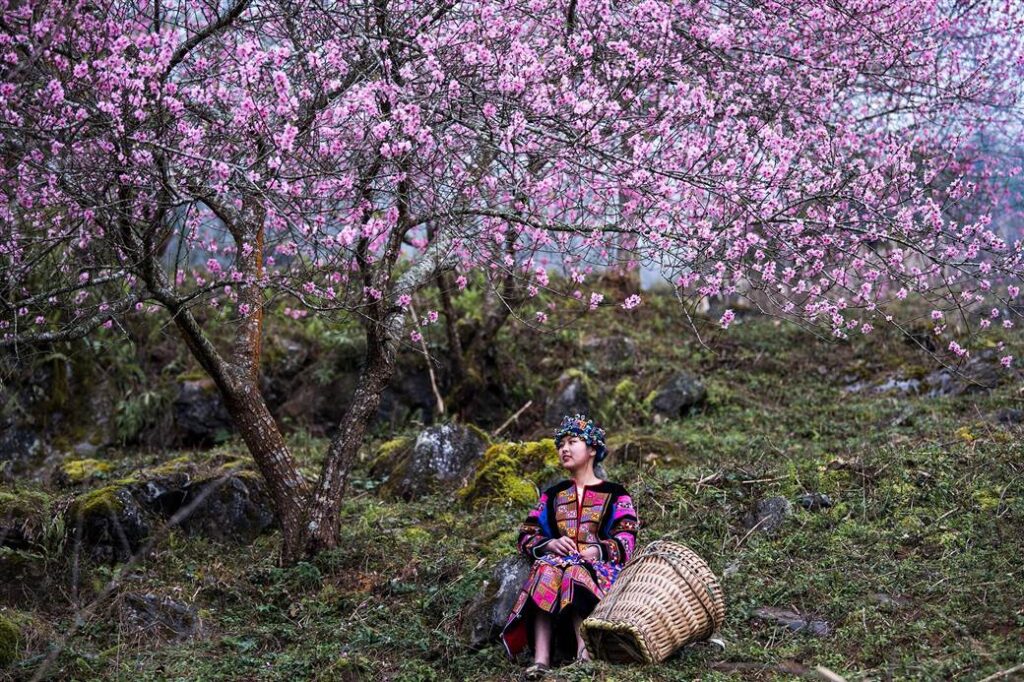
You Might Also Like
Ha Giang Weather in September: Complete Guide for Travelers
Exploring the magnificent Ha Giang Loop in September offers travelers a perfect balance of favorable[...]
Quan Ba Twin Mountains: Ha Giang’s Iconic Fairy Hills and Complete Travel Guide
The mystical Quan Ba Twin Mountains rise from the emerald valleys of Ha Giang like[...]
Vuong family mansion: the architectural marvel and cultural legacy of Ha Giang
Deep in Vietnam’s northern highlands, where mist-shrouded mountains meet terraced rice fields, stands a testament[...]
Ha Giang Loop Safety Tips: How to Ride Securely in Vietnam’s Northern Mountains
The Ha Giang Loop, with its winding mountain roads and breathtaking landscapes, offers one of[...]
The Ultimate Guide to the M-Shaped Curve on Ha Giang Loop
Vietnam’s remote northern province of Ha Giang hides a natural wonder that has captivated adventurous[...]
Most Beautiful Places to Visit in Vietnam: Essential Destinations and Insider Tips
Vietnam captivates travelers with its stunning landscapes, rich cultural heritage, and warm hospitality. From mist-shrouded[...]
Beyond the Beaten Path: Discovering Ha Giang Province in Northeast Vietnam
Ha Giang Province in Northeast Vietnam stands as one of the country’s last frontiers for[...]
Rainy season in Ha Giang: what to expect, when to go, and travel tips
Vietnam’s northern frontier reveals a different face during the rainy season, transforming Ha Giang’s limestone[...]